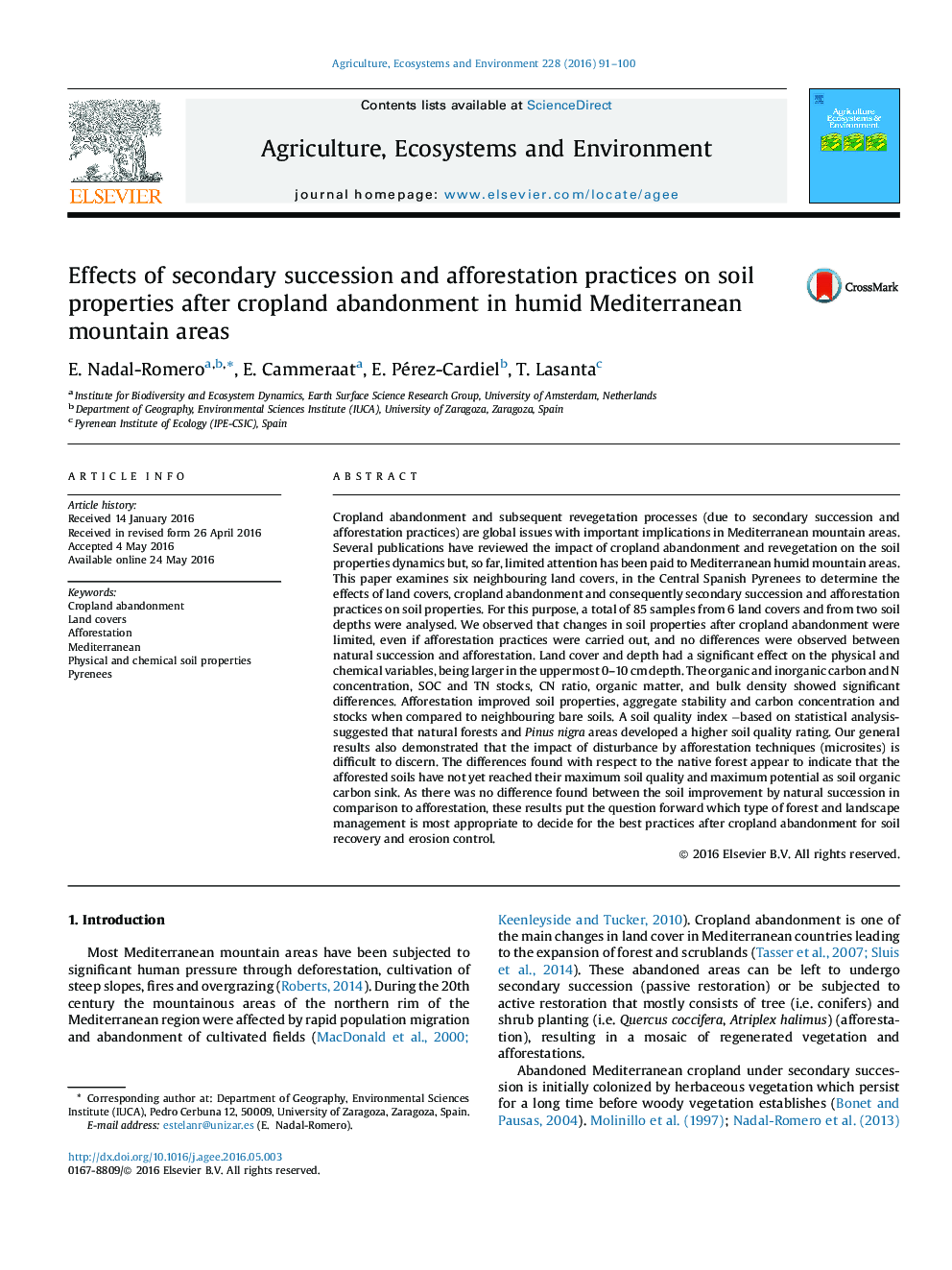| کد مقاله | کد نشریه | سال انتشار | مقاله انگلیسی | نسخه تمام متن |
|---|---|---|---|---|
| 8487424 | 1552024 | 2016 | 10 صفحه PDF | دانلود رایگان |
عنوان انگلیسی مقاله ISI
Effects of secondary succession and afforestation practices on soil properties after cropland abandonment in humid Mediterranean mountain areas
ترجمه فارسی عنوان
اثرات جانشینی ثانویه و اقدامات جنگلداری بر خواص خاک پس از ریزش زمین در مناطق کوهستانی مدیترانه ای کوهستان
دانلود مقاله + سفارش ترجمه
دانلود مقاله ISI انگلیسی
رایگان برای ایرانیان
کلمات کلیدی
رها کردن باغچه، زمین پوشش می دهد، جنگل زراعی، مدیترانه، خصوصیات فیزیکی و شیمیایی خاک، پیرنه ها،
موضوعات مرتبط
علوم زیستی و بیوفناوری
علوم کشاورزی و بیولوژیک
علوم زراعت و اصلاح نباتات
چکیده انگلیسی
Cropland abandonment and subsequent revegetation processes (due to secondary succession and afforestation practices) are global issues with important implications in Mediterranean mountain areas. Several publications have reviewed the impact of cropland abandonment and revegetation on the soil properties dynamics but, so far, limited attention has been paid to Mediterranean humid mountain areas. This paper examines six neighbouring land covers, in the Central Spanish Pyrenees to determine the effects of land covers, cropland abandonment and consequently secondary succession and afforestation practices on soil properties. For this purpose, a total of 85 samples from 6 land covers and from two soil depths were analysed. We observed that changes in soil properties after cropland abandonment were limited, even if afforestation practices were carried out, and no differences were observed between natural succession and afforestation. Land cover and depth had a significant effect on the physical and chemical variables, being larger in the uppermost 0-10Â cm depth. The organic and inorganic carbon and N concentration, SOC and TN stocks, CN ratio, organic matter, and bulk density showed significant differences. Afforestation improved soil properties, aggregate stability and carbon concentration and stocks when compared to neighbouring bare soils. A soil quality index âbased on statistical analysis- suggested that natural forests and Pinus nigra areas developed a higher soil quality rating. Our general results also demonstrated that the impact of disturbance by afforestation techniques (microsites) is difficult to discern. The differences found with respect to the native forest appear to indicate that the afforested soils have not yet reached their maximum soil quality and maximum potential as soil organic carbon sink. As there was no difference found between the soil improvement by natural succession in comparison to afforestation, these results put the question forward which type of forest and landscape management is most appropriate to decide for the best practices after cropland abandonment for soil recovery and erosion control.
ناشر
Database: Elsevier - ScienceDirect (ساینس دایرکت)
Journal: Agriculture, Ecosystems & Environment - Volume 228, 15 July 2016, Pages 91-100
Journal: Agriculture, Ecosystems & Environment - Volume 228, 15 July 2016, Pages 91-100
نویسندگان
E. Nadal-Romero, E. Cammeraat, E. Pérez-Cardiel, T. Lasanta,
